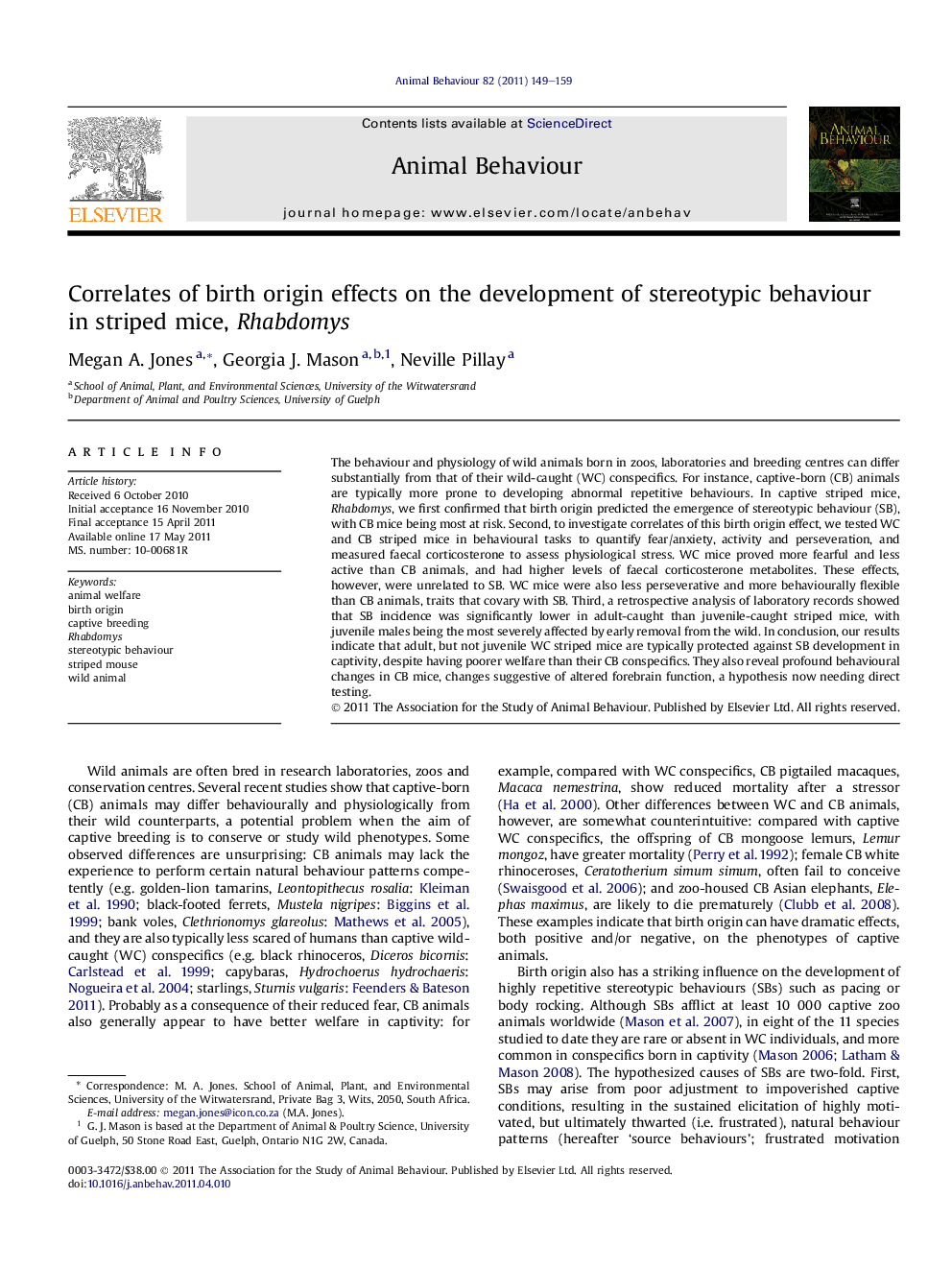| کد مقاله | کد نشریه | سال انتشار | مقاله انگلیسی | نسخه تمام متن |
|---|---|---|---|---|
| 2417036 | 1104305 | 2011 | 11 صفحه PDF | دانلود رایگان |

The behaviour and physiology of wild animals born in zoos, laboratories and breeding centres can differ substantially from that of their wild-caught (WC) conspecifics. For instance, captive-born (CB) animals are typically more prone to developing abnormal repetitive behaviours. In captive striped mice, Rhabdomys, we first confirmed that birth origin predicted the emergence of stereotypic behaviour (SB), with CB mice being most at risk. Second, to investigate correlates of this birth origin effect, we tested WC and CB striped mice in behavioural tasks to quantify fear/anxiety, activity and perseveration, and measured faecal corticosterone to assess physiological stress. WC mice proved more fearful and less active than CB animals, and had higher levels of faecal corticosterone metabolites. These effects, however, were unrelated to SB. WC mice were also less perseverative and more behaviourally flexible than CB animals, traits that covary with SB. Third, a retrospective analysis of laboratory records showed that SB incidence was significantly lower in adult-caught than juvenile-caught striped mice, with juvenile males being the most severely affected by early removal from the wild. In conclusion, our results indicate that adult, but not juvenile WC striped mice are typically protected against SB development in captivity, despite having poorer welfare than their CB conspecifics. They also reveal profound behavioural changes in CB mice, changes suggestive of altered forebrain function, a hypothesis now needing direct testing.
Journal: Animal Behaviour - Volume 82, Issue 1, July 2011, Pages 149–159